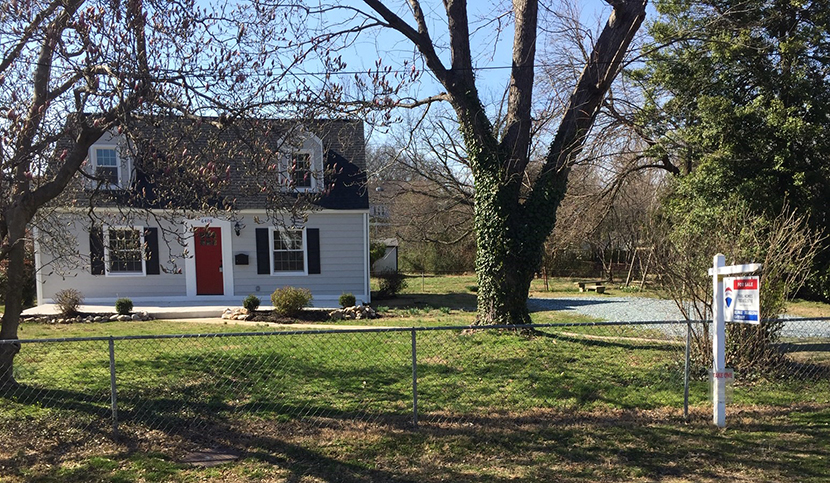
February Existing Home Sales Hit 13-Year High

Existing home sales rebounded in February to their highest level since Feb. 2007, the National Association of Realtors reported Friday.
The report said total February existing home sales rose by 6.5% from January to a seasonally adjusted annual rate of 5.77 million. For the eighth straight month, overall sales increased year-over-year, up by 7.2% from a year ago (5.38 million).
Single-family home sales rose to a seasonally adjusted annual rate of 5.17 million in February, up from 4.82 million in January and up 7.3% from a year ago. The median existing single-family home price rose to $272,400 in February, up 8.1% from a year ago.
Existing condominium and co-op sales were unchanged at 600,000 units in February, but 7.1% higher than a year ago. The median existing condo price rose to $249,900 in February, an increase of 7.0% from a year ago.
Three of the four U.S. regions improved from a month ago. February sales increased in the Midwest, the South and the West, while year-over-year sales rose in each of the four regions. Median home prices in all regions increased from one year ago, with the Northeast and South regions showing the strongest price gains.
Sales in the South rose by 7.2% to an annual rate of 2.52 million in February and improved by 8.2% from a year ago. The median price in the South rose to $238,000, an 8.2% increase from a year ago. Sales in the West jumped by nearly 19 percent to 1.26 million in February and increased by 11.5% increase from a year ago. The median price in the West rose to $410,100, up 8.1% from a year ago.
Sales increased by 0.8% in the Midwest to an annual rate of 1.29 million and improved by 4.0% from a year ago. The median price in the Midwest rose to $203,700, a 7.9% increase from a year ago. Sales in the Northeast fell by 4.1% to an annual rate of 700,000, but improved by 2.9% from a year ago. The median price in the Northeast rose to $295,400, up 8.2% from a year ago.
“This was the strongest sales pace since February 2007, and another indicator of housing market health before the current coronavirus turmoil,” said Joel Kan, Associate Vice President of Economic and Industry Forecasting with the Mortgage Bankers Association. “February’s sales activity was in line with purchase applications data from our Weekly Applications Survey, showing strong growth to start 2020.”
Kan said the drop in overall economic activity and the recessionary outlook due to the coronavirus “will adversely impact home sales in the coming months, offsetting some of this pre-crisis momentum, which was fueled by a strong job market and lower mortgage rates.”
Mark Vitner, Senior Economist with Wells Fargo Securities, Charlotte, N.C., said existing home sales “likely hit their peak” in February.
“This is likely the last hurrah for housing for a while, as closings reportedly slowed abruptly during March,” Vitner said. “If the business cycle did hit its peak in February, then if may be appropriate that existing home sales, which were at the center of the Great Recession, would hit their highest level of the cycle that month.”
Vitner said the sudden stop of economic activity and sharp equity market selloff is giving buyers pause. “There are anecdotal reports from all over the country of sellers canceling open houses and buyers walking away from closings, which should show up next month,” he said.
In the meantime, said NAR Chief Economist Lawrence Yun, February’s sales were the result of incredibly low mortgage rates and the steady release of a sizable pent-up housing demand that was built over recent years.”
NAR reported the median existing home price for all housing types in February rose to $270,100, up 8.0% from a year ago ($250,100), as prices rose in every region. February’s price increase marks 96 straight months of year-over-year gains. “These figures show that housing was on a positive trajectory, but the coronavirus has undoubtedly slowed buyer traffic and it is difficult to predict what short-term effects the pandemic will have on future sales,” Yun said.
Total housing inventory at the end of February totaled 1.47 million units, up 5.0% from January, but down 9.8% from a year ago (1.63 million). Unsold inventory sits at a 3.1-month supply at the current sales pace, equal to the supply recorded in January and down from the 3.6-month figure recorded a year ago.
The report said properties typically remained on the market for 36 days in February, seasonally down from 43 days in January and down from 44 days a year ago. Forty-seven percent of homes sold in February were on the market for less than a month.
First-time buyers were responsible for 32% of sales in February, unchanged from both January 2020 and a year ago. The annual share of first-time buyers was 33%.
Individual investors or second-home buyers purchased 17% of homes in February, equal to January and up slightly from 16% a year ago. All-cash sales accounted for 20% of transactions in February, down from both 21% in January and from 23% a year ago. Distressed sales represented 2% of sales in February, unchanged from January and down from a year ago.
